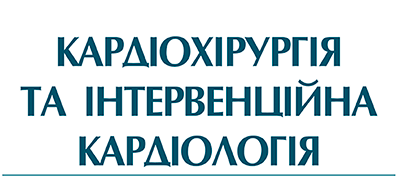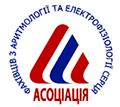Original research
Global longitudinal strain and its dynamics after replacement of aortal valve in patients with severe aortic stenosis
N.V. Ponych 1, O.O. Nemchyna 2, O.J. Zharinov 3, O.A. Yepanchintseva 1, 3, B.M. Todurov 1, 3
1 Heart Institute of Healthcare Ministry of Ukraine, Kyiv, Ukraine
2 National Scientific Center «M.D. Strazhesko Institute of Cardiology of NAMS of Ukraine», Kyiv, Ukraine
3 Shupyk National Medical Academy of Postgraduate Education, Kyiv, Ukraine
The aim – to determine factors that may influence the global longitudinal strain (GLS) and its dynamics after replacement aortic valve (RAV) in patients with severe aortic stenosis (AS).
Materials and methods. In a one-center prospective study, 30 patients with severe AS were sequentially screened for RAV surgery. Among them there were 16 (53,3 %) men and 14 (46,7 %) women. The median age was 63 (range from 46 to 77, quartiles 57–69) years. All patients underwent clinical and instrumental study, including transthoracic echocardiography (TTE) and coronary angiography. In the early postoperative period and 6–12 months after surgery, all patients performed a repeat TTE according to a standard protocol that included an assessment of the GLS. GLS data and their dynamics was performed in the groups of patients with preserved (n = 18) and low (n = 12) left ventricular ejection fraction (LV EF).
Results. In patients with preserved LV EF, the median of the preoperative GLS was –12 % (in the quartiles from –15 to –11 %), postoperative GLS –11 % (quartiles from –11 to –9 %). In patients with reduced LV EF, the median of the preoperative GLS was –6 % (from –8.5 to –4 % for quartiles), –8.5 % for postoperative GLS (from –10 to –6 % for quartiles) (p < 0.001 for comparison of baseline and p < 0.05 relative to differences in dynamics of GLS in comparable groups). In the examined patients, significant correlations were found between baseline GLS with functional class of heart failure, concomitant tricuspid insufficiency, atrial fibrillation, duration of QRS complex, LV EF, end-diastolic, endsystolic volume index (EDV, ESV) and volume left atrium (LA), left ventricular myocardial mass index, aortic valve orifice area index, E/A ratio, and Thei index. In turn, the positive dynamics of GLS significantly depended on the initial functional class of heart failure, the stage of arterial hypertension, the degree of tricuspid insufficiency, LV EF, the index of volume LA in the preoperative period.
Conclusions. In patients with severe AS, the GLS rate is determined by the severity of hemodynamic overload of LV and changes in its remodeling. The favorable GLS dynamics after RAV, which is achieved in patients with severe AS, heart failure and left ventricular systolic dysfunction, may reflect reverse LV remodeling in the postoperative period.
Key words: myocardial deformation, global longitudinal strain, left ventricle, aortic stenosis, aortic valve replacement.
| [PDF] | [References] |








